#3 Joyful Awareness 2022
The Month of Joyful Awareness
March 22 – April 30, 2022
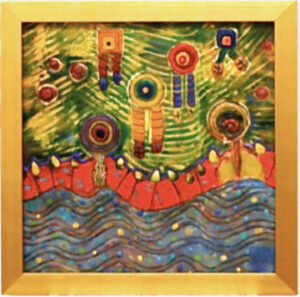
EXCURSION THREE: DISCOVERING JOY EVERYWHERE
If the doors of perception were cleansed every thing would appear to man as it is, Infinite. – William Blake
We will discover more about cleansing the doors of perception this month through the practice of becoming Joyfully Aware, as we continue our journeys of transmuting the wonders of one of our earthly rivers into a River of Joy.
A brief catch-up and review:
 Our first month found us exploring the traditional four rivers of Paradise, as these four appear in the Judeo-Christian traditions, as well as many others. Seeking Sources of Joy, we traveled on individual versions of Noah’s Ark.
Our first month found us exploring the traditional four rivers of Paradise, as these four appear in the Judeo-Christian traditions, as well as many others. Seeking Sources of Joy, we traveled on individual versions of Noah’s Ark.
 The Month for Joyful Beliefs brought us to Nile – up and down and back again in our feluccas to touch into possibilities of believing in joy, and experiencing joyful beliefs, one of which for me as a denizen of the Northern Hemisphere, is that it’s possible for a several thousand mile long river to run every one of those miles toward the North. And bring riches and delights as it does so.
The Month for Joyful Beliefs brought us to Nile – up and down and back again in our feluccas to touch into possibilities of believing in joy, and experiencing joyful beliefs, one of which for me as a denizen of the Northern Hemisphere, is that it’s possible for a several thousand mile long river to run every one of those miles toward the North. And bring riches and delights as it does so.
As we travel into this third month of the Joy Calendar year, we awaken to the possibility that becoming ever more aware of beauty, bravery, and creation can itself “cleanse the doors of perception.”
Simply allowing our breath to guide us into gratitude and joy while
• noticing the subtlest shade of glistening amber in a bird’s dark wing,
• hearing the flicker of a breeze through the maple tree,
• touching so delicately a violet making its gallant way through the muddy snow,
• hearing the kind neighbor call cheerfully “Good Morning,”
• tasting, really tasting, that first glass of water in the morning
it doesn’t only cleanse the sensory doors of perception, but also incites us to become a forager for joy. We seek it everywhere — in the glory and mystery of the world, in the creativity of the universe and our friends and our friends’ children, and in the sheer courage of people managing to hold on in the midst of war and injustice. Finding profound joy in the sheer aliveness bursting forth in even the most difficult circumstances is one of the potent teachings from the sages of India and throughout the world influenced by such thinkers and such practice.
ASSIGNMENT
Our assignment this month is thus: to heighten our awareness of joy as infinite — infinite in all directions, in all circumstances. To assist in this enterprise, we will imagine ourselves pilgrims to India, traveling on what has been honored as the most sacred river of the world, the Ganges, in a typical river craft, carrying pilgrims.
As pilgrims our task is to offer thanks and praise to the river as we discover and rediscover countless reasons for joy. Particularly joy in our capacity to sense the sacred power inherent in all being.
From its birthplace in the glaciers of the Himalayas, the river’s power has given it the form of a great goddess, Ganga. Imagine Her joy as she sang forth from the sacred mountains to nourish and bathe her people. Infinite in all directions.
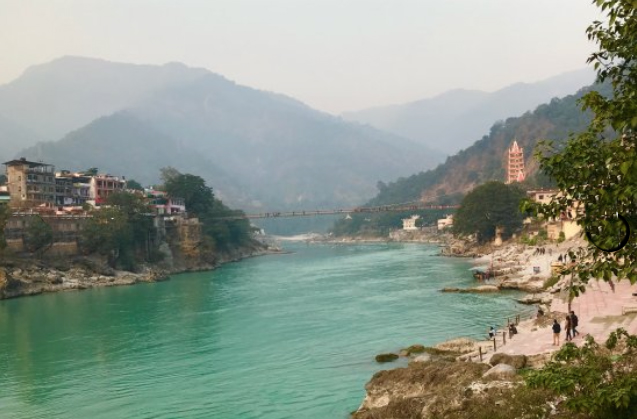
On this voyage, we pilgrims visit four holy cities that have grown up along the banks of the Ganges: Haridwar, Allahabad (now carrying the Hindu name Prayagraj), Varanasi (Benares) and Calcutta (known today as Kalkata). (Archeologists studying the layers of life in Varanasi estimate it as one of the oldest inhabited cities on earth.) As we open to enjoyment of this river as a river of joy we find ourselves making offerings and prayers at temples, and most important of all, bathing in the sacred river. This releases all our sins and opens us to great blessings.
Haridwar
We come first to Haridwar, “gateway to the Gods,” one of the seven sacred cities, resting near the foothills of the mountains from which the Ganga pours forth. Its name honors both the gods Shiva (Har) and Vishnu (Hari). Here pilgrims gather Ganga water, to carry home and offer to their local gods. We are invited to gather joy and carry it across the world, pouring it forth from an endlessly full vessel.

Allahabad
Our second stop honors the ancient city of Allahabad, known today as Prayagraj. Mentioned in Hindu scriptures, it sits near the powerful confluence of three sacred rivers, the Ganges, the Yamuna (tributary to the Ganges,) and the mythic river named Sarasvati. As its earlier Moslem name implies, it was also a center for the Mughal empire (1526 to 1761).
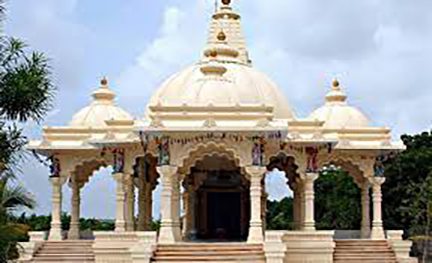
Varanasi
Varanasi is our next holy city. Here we hear classical Indian music, stop to shop for silken carpets, listen to teachings at one of the many Sanskrit colleges, as well as honor the belief of millions of Hindus that to die in this holy city and have one’s ashes given to the river assures the ultimate spiritual release.
A short road trip takes us to Sarnath, the legendary Deer Park, where with attuned ears we can listen for echoes resonating among the trees of the Buddha’s very first sermon, “Setting in Motion the Wheel of the Dharma.”
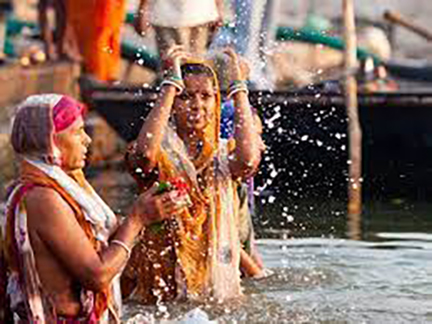
Kalkata
Our voyage of opening to Joyful Awareness ends at Kalkata (once known as Calcutta, first capital city of the British empire). Its name in Bengali means “Field of the goddess Kali, whose temple we visit to honor Her, her great devotee, the saintly Ramakrishna, and Her avatar, Sarada Devi. Their teachings travelled the world with the amazing Swami Vivikananda.
A favorite quote:
“As different streams having different sources all mingle their waters in the sea, so different tendencies, various though they appear, crooked or straight, all lead to God.”
And the Bengali poet Rabindranath Tagore, whose words bring this part of our journey to a close.
“I slept and dreamt that life was joy. I awoke and saw that life was service. I acted and behold, service was joy.”
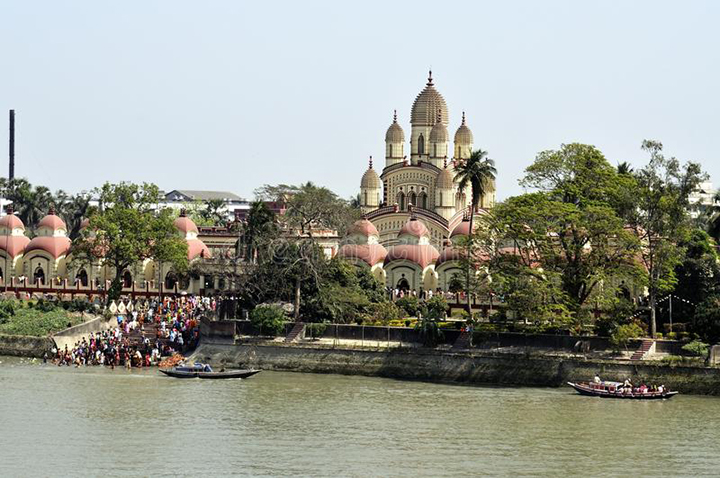
Joyful Awarensess. Infinite in All Directions.
Praise. Praise. Praise.
Buy the calendar:
 The Lady’s Year for Joy
The Lady’s Year for Joy
The Lady’s Year for Joy is your personal guide and journal as you seek, focus, explore, test, recognize, experience, embrace, offer, and report
the truth of Joy in the world.
For you and for gifting your friends — this new calendar will enrich your daily reflections.
$25.00 plus shipping
Join the Daily Poets via Telephone
In 2010, several members of Jean Houston’s West Coast Mystery School joined to support one another with a daily phone call to ponder the inspirational writings collected by Peggy Rubin. All are welcome to join the calls. For those who wish to join the call at 9 am Pacific time the number is 1-605-313-4818 (new in April, 2019), code 884124#. Read more about them HERE.
Sign Up to Receive Peggy’s Posts on Practicing Joy in the World via Email:
See subscription in footer area, below.


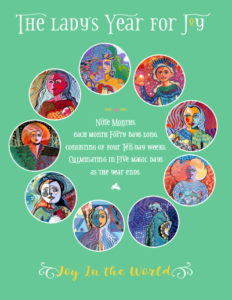 The Lady’s Year for Joy
The Lady’s Year for Joy
March 19, 2022 @ 6:27 am
These trips are so refreshing. There is no better guide than Peggy Rubin. I feel so safe with her! Thank you for your pure and unconditional love.
March 19, 2022 @ 7:05 am
Simply reading these words and immersing myself in the images and my memories of India initiates the beginning of a tidal wave of cleansing my perceptions as I go into this day. And with the rain falling all day I appreciate with renewed perception the rivers that it is replenishing, along with the nourishment of springtime’s rebirthing of all the earth.
March 25, 2022 @ 10:28 am
What a send off! Thank you, Peggy, for being such a marvelous storyteller and introducing us to a world of wonders and imagination. One of my most frequent sources of joy is in writing and the story of the “churning of the milk” brought a joyful realization that this beautifully (perfectly? wonderfully? vividly?) describes the process of choosing just the right word or phrase during the act of writing. And sometimes, after that pulling back and forth, a totally new word or phrase is churned up! And that is indeed a joy.
Listening to all those stories also stimulated my imagination and I was inspired to write a “creation story” myself. (No disrespect or irreverence intended.) So here goes:
Once upon a forgotten time, there were giants that roamed the land, as we all know, but not all of these giants were humans. In a remote river valley in the Himalayas where no one had ever been (and to this day is still unknown) there lived a race of giant monkeys. Everything in the valley was on a giant scale, there were giant rocks and giant flowers and acres and acres of giant banana trees that reached high up into the sky. The monkeys delighted in climbing the trees and picking the bananas for their breakfast, lunch and dinner.
One day while walking by the river, one of the giants saw a remarkable sight. A bedraggled group of strange looking small creatures (they came only to his knees) were crawling up out of the river onto the shore. They were very unattractive looking as they had almost not hair at all, only a scruff of hair on the tops of their heads and they had funny pointy noses. But they did look a little like monkeys. They were all running around gesturing and chattering. So the giant, who was kind and curious, bent down and tried to understand what they were saying.
Now in those days, beings could understand one another, even if they spoke differently languages, or didn’t speak at all, like trees and flowers and fish. So the giant understood. They said they were Pilgrims and had been sailing down the Ganga River but they went over a waterfall and the river became two rivers and their boat capsized throwing them into the water and now they were lost! And hungry.
“Well, first things first,” thought the giant, and she pointed to the banana trees. There was plenty to eat. But — how very odd! These little beings didn’t know how to climb trees! So the giant reached up to a low branch and picked a ripe banana. It was bigger than two of the tallest creatures put together and, after working hard to peel it, they ate it and it fed every one of them.
Now the giant knew that this river was a part of the Ganga. It was a holy river and so all beings knew it. So the Pilgrims weren’t really lost– if only they could find another boat. Well, the monkeys were not sailors and had no boats. But this giant had an idea.
He looked at the banana tree again and saw that just one of it’s leaves was big enough to hold all the Pilgrims and thought “That leaf would make a good boat!” The fibers were very strong and knit together so closely that it would not let any water in at all. And, at the same time, it was thin, so they could feel the pulse of the great river in its waves.
So that is what they did. As they were leaving, the giant threw some flowers into the boat because he thought the creatures pointy noses would enjoy the fragrance and he gave them a large candle for the center of the boat so that the gods could see them at night and wouldn’t let them get lost again.
And that is why, to this very day, Pilgrims come from everywhere to give thanks and honor the great river goddess Ganga and the good Giant Monkey who helped them to find their way.
The End.
April 18, 2022 @ 6:18 pm
Conversations can bring joy. I recently had a wonderful conversation with a Tibetan friend and a visiting young monk from India. I found out that my friend had bathed in the Ganga and that she had come to Varanesi many times with her family when Tibet was free. Then they would go to the Deer Park where she said the Buddha gave his first teachings and then on to Bod Gaya, a sacred mountain. The three of us then had a delightful discussion about Angels and Fairies. Both she and the young monk thought they were the same thing. In Buddhism there is some kind of being that they called a fairy, (a hamu) but they decided it was more like an Angel when I told them that fairies could also be bad and play tricks. And the hamu are always good and help people. But, unlike Angels, the hamu don’t have wings. However, they do fly, but it is “from the inside.”
It was wonderful to be with both of them and to connect so intimately with this trip down the Ganga on our River of Joy!